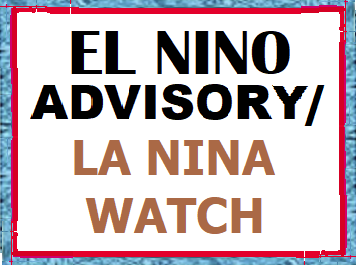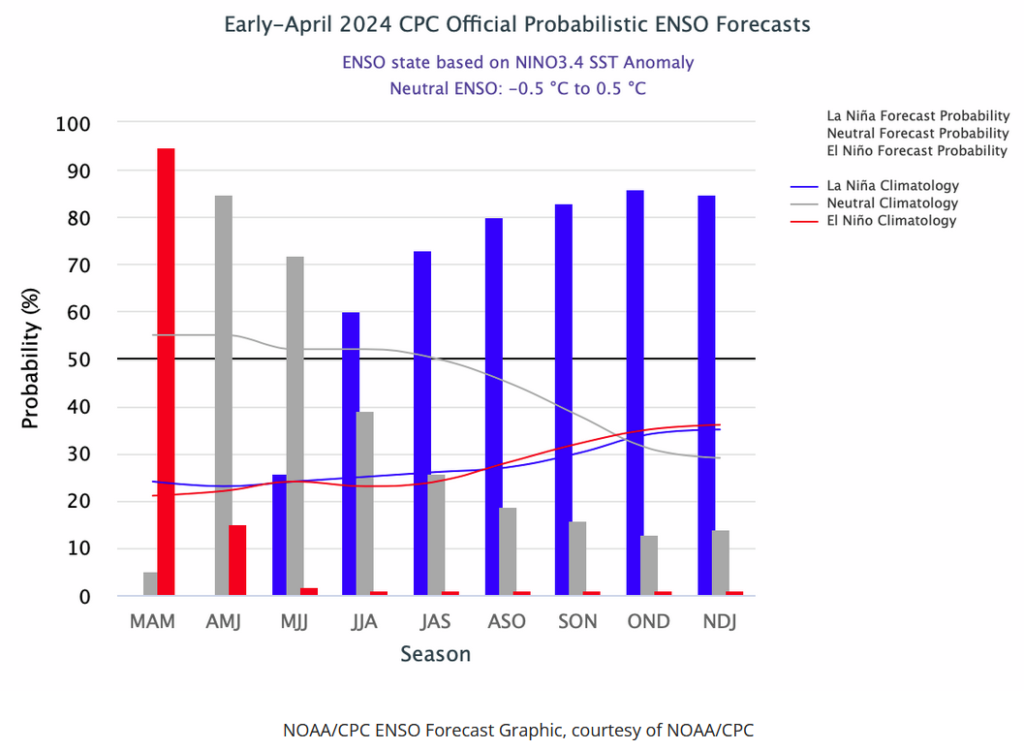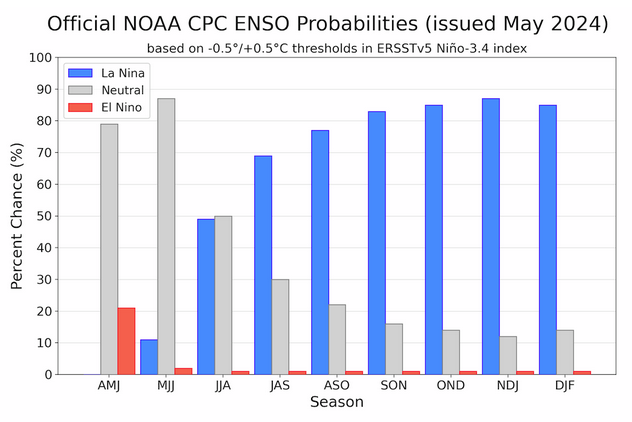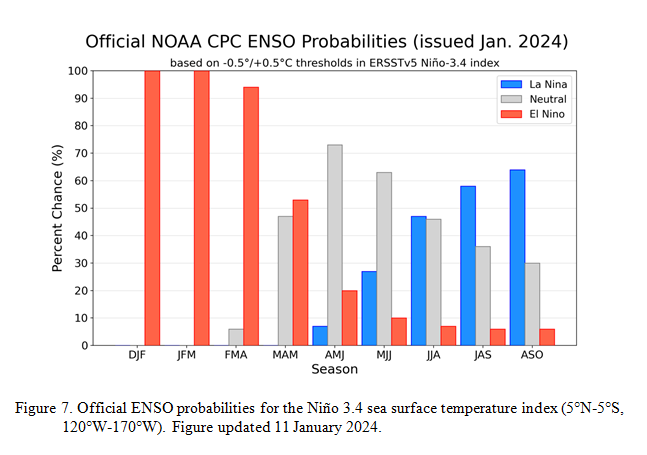NOAA Updates its ENSO Alert on May 9, 2024 – The El Nino Advisory/La Nina Watch Continues. – La Nina Onset a Bit Slower than Prior Estimate – Published May 10, 2024
On the second Thursday of every month, NOAA (really their Climate Prediction Center CPC) issues its analysis of the status of ENSO. This includes determining the Alert System Status. NOAA again describes their conclusion as “ENSO Alert System Status: El Nino Advisory La Nino Watch”
The exact timing of the transition is not very clear which will impact the reliability of the Seasonal Outlook to be issued next Thursday. It does look like the onset may be slightly slower than thought last month. This may turn out to be a trend i.e. recognizing that the onset will be less rapid than previously thought. I am just guessing. It is difficult to predict how the phases of ENSO will unfold.
We have included an ENSO Blog article by Emily Becker.
 >
>
CLIMATE PREDICTION CENTER ENSO DISCUSSION
| The second paragraph is what is important:
“The most recent IRI plume favors an imminent transition to ENSO-neutral, with La Niña developing during July-September 2024 and then persisting through the Northern Hemisphere winter. The forecast team continues to favor the dynamical model guidance, which suggests La Niña could form as early as June-August 2024, with higher confidence of La Niña during the following seasons. La Niña generally tends to follow strong El Niño events, which also provides added confidence in the model guidance favoring La Niña. In summary, a transition from El Niño to ENSO-neutral is likely in the next month. La Niña may develop in June-August (49% chance) or July-September (69% chance).” Below is the middle paragraph from the discussion last month. “The most recent IRI plume indicates a transition to ENSO-neutral during spring 2024, with La Niña potentially developing during late summer 2024. The forecast team continues to favor the dynamical model guidance, which is slightly more accurate than statistical models during this time of year. La Niña tends to follow strong El Niño events, which also provides added confidence in the model guidance favoring La Niña. In summary, a transition from El Niño to ENSO-neutral is likely by April-June 2024 (85% chance), with the odds of La Niña developing by June-August 2024 (60% chance).” |
We now provide additional details.
CPC Probability Distribution
Here are the new forecast probabilities. The probabilities are for three-month periods e.g. MAM stands for March/April/May.
Here is the current release of the probabilities:
| This chart shows the forecasted progression of the evolution of ENSO from the current El Nino State to Neutral and by the summer to La Nina. This kind of bar chart is not very good at showing uncertainty. |
Here is the forecast from last month.

| The analysis this month and last month are not very different. |












